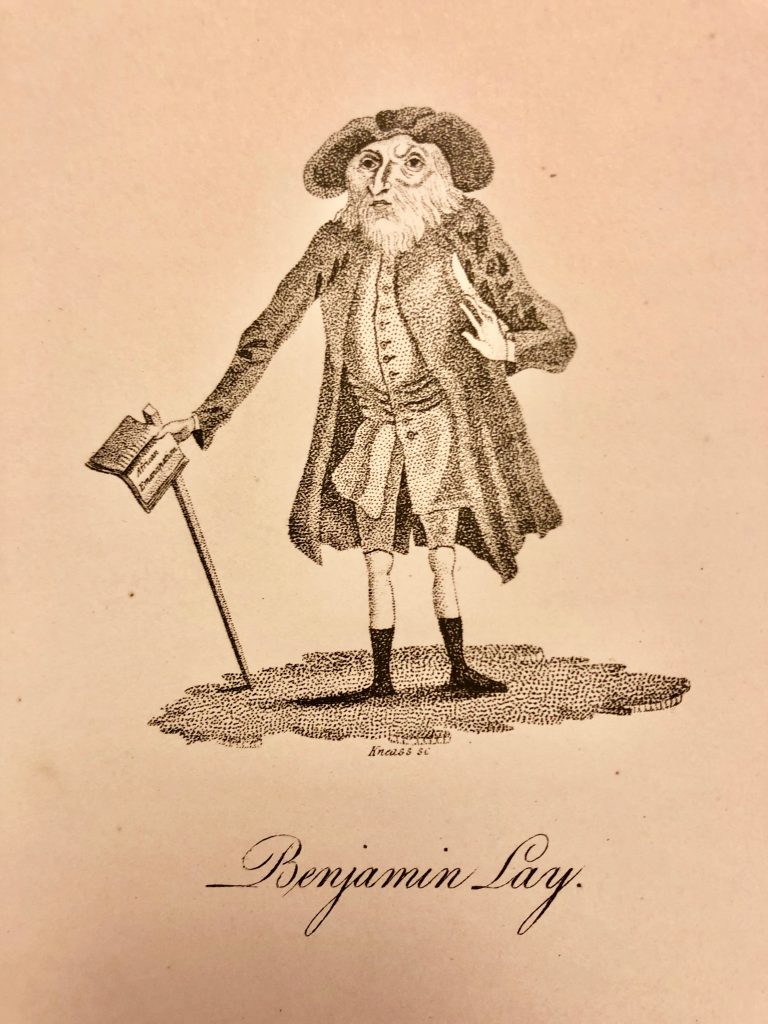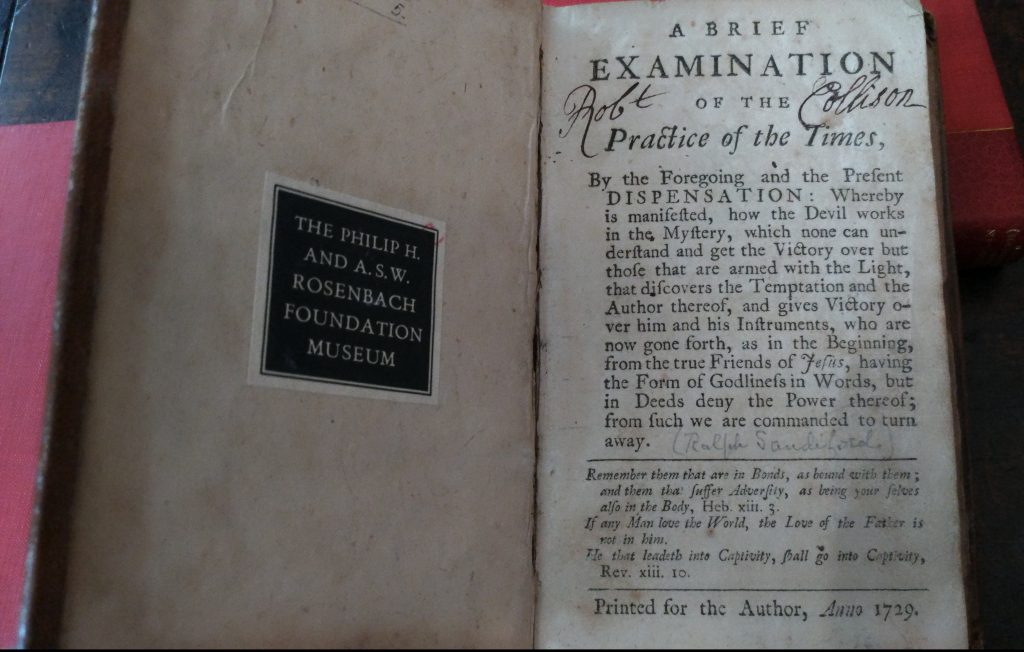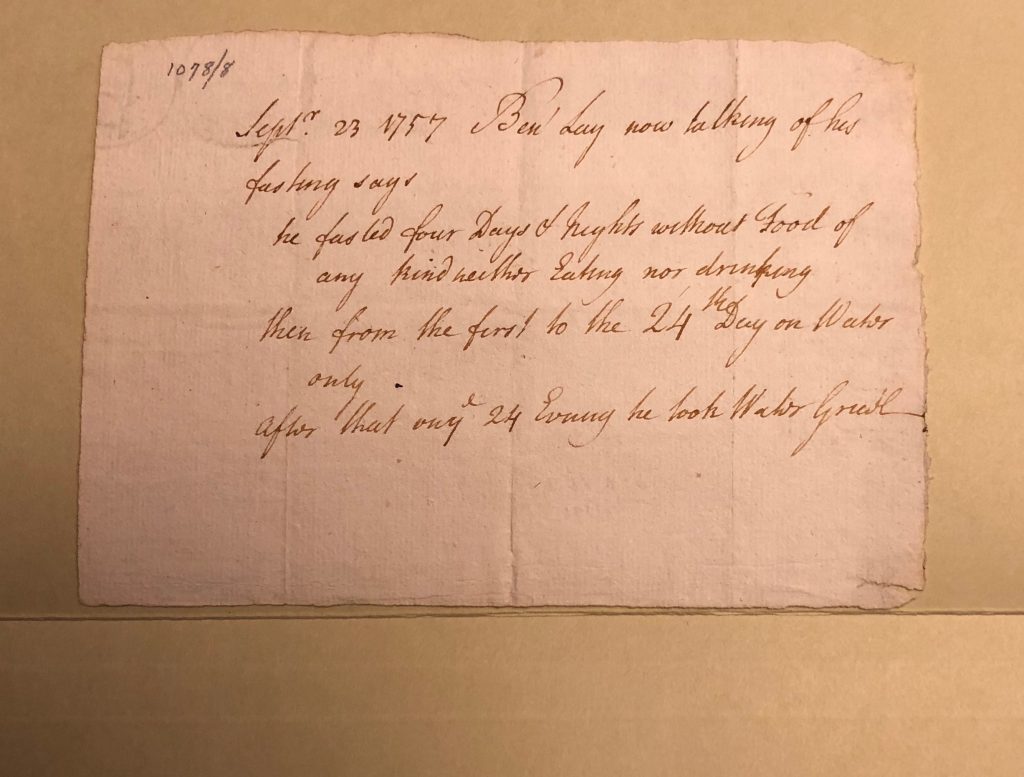We often think of the abolition movement beginning in the early 1820s with people like Frederick Douglas, Sojourner Truth and Charlotte Grimke. But since the beginning of slavery in the United States, there were people whose lives were devoted to ceasing and ending it. A few of these early anti-slavery advocates are here at The Rosenbach.

Benjamin Lay arrived in Philadelphia 1731, fresh from stirring up troubles in the Quaker communities of England. A person of devout faith, Lay believed in the ideals of democracy and freedom that underpinned the Quaker faith and publicly rebuked Quaker ministers whose faith he deemed feigned or artificial. His actions were sourced directly from his internal compass of right and wrong. He wasn’t afraid to tell people what he thought, even if it caused his own public ostracism and shame.
In Philadelphia, Lay turned his attention to slavery. During a brief stay in Barbados, he witnessed the horrors of slavery on sugar plantations. He felt that slavery was a ‘hellish practice’ that should be abolished (Rediker 34). He started connecting and sharing ideas with other local anti-slavery Quaker advocates like Ralph Sandiford. Sandiford owned a shop above the 4th and Chestnut slave market and would consistently hear the cries of families being torn apart. Sandiford’s book, A Brief Examination of the Times, provides a religiously based refutation of slavery.

Neither Lay nor Sandiford felt that Quakers, apostles of democracy and tolerance, had any business holding slaves or participating in the slave trade. Lay is most famous for very visible, public and controversial protests. A few examples:
- He once stood at the door to Quaker meeting house in rags and no shoes as participants filed in to raise awareness of the conditions of slaves.
- He once kidnapped a child for a day to prove a point to the child’s Quaker slaveholding parents who held a six year old girl as a slave.
- He would hold lengthy fasts to draw attention to slavery.
- He is perhaps most famous for his radical actions at the Burlington, New Jersey Quaker Meeting in 1738. Prior to the meeting, he carved a nook in an old, worn book and filled it with pokeberry juice, probably using an animal skin flask. He then dressed in military garb, wore a robe to disguise the garb and went to the meeting. In the middle of the service Lay stood up, threw off his robe to reveal his military clothing, pulled out the book and said “Thus shall God shed the blood of those persons who enslave their fellow creatures.” He then plunged a sword into the book splattering pokeberry juice over the participants. (Rediker 2).
Lay decided that the way he lived his life could no longer support the slave trade. Since cotton and sugar were both commodities secured through slavery, he stopped wearing cotton and sewed his own cloths from hemp cloth. He completely stopped eating sugar and any animal products as well. Perhaps he was Philadelphia’s first vegan. He removed himself from society and lived in a cave in Abington with his wife Sarah.
The Rosenbach has a note from a visitor to Lay during one of his fasts. This visit occurred a few years before his death when Lay was quite ill. We don’t know the writer or the recipient. Yet it is a very personal and poignant note; simple, as if it could have been written yesterday.

One wonders if the writer was sent simply as a messenger, to impersonally record Lay’s condition and relay back to some authority, a very concerned friend, or even a fellow anti-slavery advocate, taking the news of a monumental fast to bring courage to those fighting slavery.
Sandiford and Lay’s efforts had impact. Both Pennsylvanians, Sandiford and Lay led a growing movement of Quakers in Pennsylvania who freed their slaves and eventually pushed for Pennsylvania to become the first state to outlaw slavery in the late 1700s. Slavery however, was not over in the United States and the Quakers were key conductors and safe house providers on the Underground Railroad.
Many of the facts in this blog were sourced from Marcus Rediker’s book The Fearless Benjamin Lay and from Manisha Sinha’s The Slave’s Cause, a History of Abolition.

Thank you for writing beautifully about this brave and fascinating man!
Great story of an early moral pioneer. Very relevant as the Underground Railroad and Harriet Tubman’s story portray the courageous efforts of the anti-slavery advocates. I’m reading William Still’s account of the Underground Railroad and looking forward to the Harriet Tubman movie coming out Nov. 1.